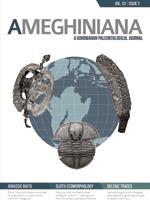Recent field expeditions have led to the discovery of a selachian assemblage from the earliest Miocene (Aquitanian) deposits of the Uitpa Formation in the La Guajira Peninsula, Colombia. This elasmobranch assemblage provides a unique glimpse into the Caribbean biodiversity at the onset of the Neogene. The assemblage consists of 13 taxa, of which some are reported from Miocene deposits for the very first time. There are also new records of taxa the in southern Caribbean region. The taxonomic composition of the selachian assemblage was used to conduct a paleoenvironmental and paleobathymetric analysis of the lower Uitpa Formation. The maximum likelihood estimation of paleobathymetry suggests that the lower part of the Uitpa Formation was probably accumulated at a water depth of 100 to 200 m. This indicates a rapid increase in relative sea level or basin deepening, providing new insights into the possible causes of marine biota changes in the Cocinetas Basin during the Oligocene/Miocene transition.
How to translate text using browser tools
1 April 2016
A New Early Miocene (Aquitanian) Elasmobranchii Assemblage from the la Guajira Peninsula, Colombia
Jorge D. Carrillo-Briceño,
Thodoris Argyriou,
Vladimir Zapata,
René Kindlimann,
Carlos Jaramillo
ACCESS THE FULL ARTICLE

Ameghiniana
Vol. 53 • No. 2
April 2016
Vol. 53 • No. 2
April 2016
América Tropical
Caribbean
Caribe
Neogene
Neógeno
Paleoambientes
paleobathymetry




